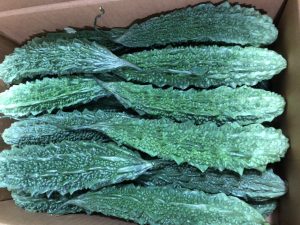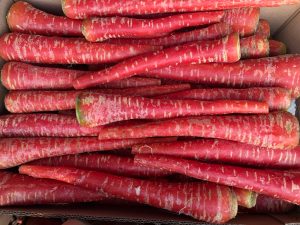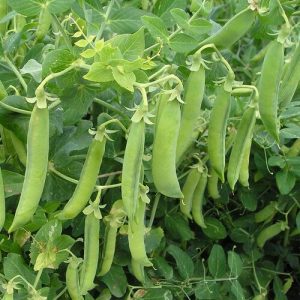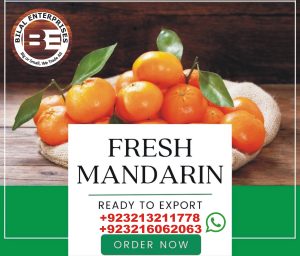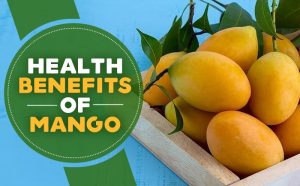Table of Contents
ToggleMANGO SEASON STARTED MAY 2024 IN PAKISTAN
That’s fantastic news! Mango season in Pakistan is eagerly awaited by many people around the world because Pakistan is famous for its delicious mangoes, particularly the prized variety known as “SINDHRI, CHAUNSA, ANWAR RATOL, LANGR, DUSSHERI.”
Starting in May, mango lovers can expect to indulge in the sweet, succulent goodness of Pakistani mangoes. The season typically peaks around June , July and august offering plenty of opportunities to enjoy this delectable fruit in various forms.
From enjoying them fresh as a snack to incorporating them into refreshing drinks like mango milk shake or using them in traditional desserts like mango Ice cream, there are countless ways to savor the flavors of Pakistani mangoes during the season.
Whether you’re in Pakistan or enjoying these mangoes from afar, it’s definitely a time to celebrate and relish the bounty of nature’s sweetness.
MANGO SEASON COMING SOON IN PAKISTAN
That sounds wonderful! Mango season is always eagerly awaited in many parts of the world, especially in places like Pakistan where mangoes are known for their delicious taste and variety. Do you have a favorite type of mango?

MANGO PRE BOOKING STARTED
That’s great news! Pre-booking mangoes ensures that you get the pick of the crop once the season arrives. It’s always exciting to anticipate the arrival of fresh, juicy mangoes. Do you have any specific type of mango you’re looking forward to pre-booking?

MANGOES VARIETIES IN PAKISTAN
Pakistan is one of the world’s largest producers of mangoes, and its mango exports are significant in the global market. Pakistani mangoes are renowned for their exceptional taste, aroma, and quality, making them highly sought after in various countries.
The main varieties of mangoes exported from Pakistan include Chaunsa, Sindhri, Anwar Ratol, Langra, and Dussehri, among others. These varieties have distinct flavors and textures, appealing to different preferences around the world.
The major export markets for Pakistani mangoes include the Middle East, Europe, North America, and Asia. Gulf countries such as UAE, Saudi Arabia, and Kuwait are among the top importers of Pakistani mangoes due to their proximity and large expatriate populations who have a strong demand for the fruit.
In recent years, efforts have been made to increase mango exports from Pakistan by improving packaging, transportation, and marketing strategies. Additionally, various government initiatives aim to facilitate mango growers and exporters to ensure the quality and competitiveness of Pakistani mangoes in the international market.
Overall, mango exports from Pakistan play a crucial role in the country’s economy, generating revenue, creating employment opportunities, and showcasing Pakistan’s agricultural prowess on the global stage.
MANGO PROCESSING FOR EXPORT
Mango processing for export involves several critical steps to ensure that the fruit reaches its destination in optimal condition. Here’s a breakdown of the key stages, including harvesting, washing, grading, and packing:
Harvesting: Mangoes are harvested when they reach maturity and are ready for consumption. This typically occurs when the fruit reaches the desired size, color, and sugar content. Harvesting is usually done manually, with workers carefully picking the mangoes from the trees to avoid damage.
Washing: After harvesting, mangoes are washed to remove any dirt, debris, or residues that may be present on the surface. This step helps improve the overall cleanliness and appearance of the fruit. Mangoes may be washed using clean water or mild sanitizing solutions to reduce the risk of contamination.
Grading: Grading involves sorting mangoes based on various criteria such as size, color, ripeness, and external quality. This ensures that only high-quality mangoes meeting specific standards are selected for export. Grading may be done manually by trained workers or using automated sorting systems, depending on the scale of the operation.
Packing: Once mangoes have been washed and graded, they are packed into appropriate containers for transportation. Packing materials may include cardboard boxes, plastic crates, or wooden baskets, depending on the requirements of the market and the mode of transportation. Mangoes are carefully arranged in the packaging to minimize bruising and damage during transit.
Quality Control: Throughout the processing and packing stages, quality control measures are implemented to ensure that only mangoes of the highest quality are selected for export. This may involve regular inspections, sampling, and testing to assess factors such as taste, texture, aroma, and appearance.
Labeling and Documentation: Mangoes destined for export are labeled with relevant information such as variety, origin, weight, and packing date. Additionally, export documentation such as phytosanitary certificates, certificates of origin, and shipping invoices are prepared to comply with international trade regulations and facilitate customs clearance.
Cold Chain Management: To maintain the freshness and shelf life of mangoes during transportation, cold chain management practices are implemented. This involves storing mangoes in temperature-controlled facilities and using refrigerated transport vehicles or containers to prevent spoilage and extend the fruit’s post-harvest life.
By carefully following these processing steps, mango exporters can ensure that their products meet the quality standards demanded by international markets, thereby enhancing their competitiveness and marketability.

MANGO PHYTOCHEMICALS FOR EXPORT
When it comes to exporting mangoes, understanding their phytochemical composition is crucial, as it influences their nutritional value and potential health benefits. Here are some key phytochemicals found in mangoes that are important for export:
Polyphenols: Mangoes contain various polyphenolic compounds such as flavonoids, phenolic acids, and tannins. These compounds contribute to the antioxidant capacity of mangoes, which is beneficial for human health. Polyphenols also play a role in reducing oxidative stress and inflammation in the body.
Carotenoids: Mangoes are rich in carotenoid pigments such as beta-carotene, lutein, and zeaxanthin, which give them their vibrant orange and yellow colors. Carotenoids are important antioxidants that protect cells from damage caused by free radicals and ultraviolet (UV) radiation. They also support eye health and may reduce the risk of certain chronic diseases.
Vitamin C: Mangoes are an excellent source of vitamin C, also known as ascorbic acid. Vitamin C is a water-soluble antioxidant that supports immune function, collagen synthesis, and iron absorption. Including vitamin C content on packaging and marketing materials can enhance the appeal of mangoes for export markets.
Dietary Fiber: Mangoes are a good source of dietary fiber, including soluble and insoluble fibers such as pectin and cellulose. Fiber contributes to digestive health by promoting regularity, preventing constipation, and supporting the growth of beneficial gut bacteria. Highlighting the fiber content of mangoes can appeal to health-conscious consumers.
Terpenoids: Mangoes contain various terpenoid compounds such as mangiferin and lupeol, which have been studied for their potential health benefits. Terpenoids exhibit anti-inflammatory, anti-cancer, and antimicrobial properties, making them of interest for their therapeutic potential.
Phenolic Acids: Phenolic acids found in mangoes, such as gallic acid and chlorogenic acid, contribute to their antioxidant activity and health-promoting effects. These compounds may help reduce the risk of chronic diseases such as heart disease, diabetes, and cancer.
When exporting mangoes, highlighting their phytochemical content and potential health benefits can be a valuable marketing strategy. Providing information on nutritional value, antioxidant properties, and phytochemical composition can help differentiate mangoes in the global marketplace and appeal to consumers seeking nutritious and functional foods.
MANGO HOT WATER TREATMENT FOR EXPORT IN PAKISTAN
Hot water treatment (HWT) is a common phytosanitary measure used in the export of mangoes from Pakistan to control fruit fly infestations and meet the quarantine requirements of importing countries. Here’s how the process typically works:
Selection of Mangoes: Mangoes selected for export undergo careful inspection to ensure they are free from visible signs of damage, pests, or diseases.
Preparation of Hot Water Bath: A hot water bath is prepared by heating water to a specific temperature, typically between 48°C to 52°C (118°F to 126°F), depending on the requirements of the importing country and the mango variety being treated. The water temperature and duration of treatment are critical to effectively kill fruit fly larvae without causing damage to the mangoes.
Immersion of Mangoes: Mangoes are carefully immersed in the hot water bath for a predetermined period, typically between 60 to 90 minutes, depending on the temperature and the size of the fruit. The mangoes are submerged completely to ensure uniform treatment.
Cooling and Drying: After the hot water treatment, mangoes are removed from the water bath and allowed to cool and dry naturally. Proper cooling is essential to prevent heat-related damage to the fruit.
Quality Inspection: Following treatment, mangoes undergo a quality inspection to ensure they remain free from damage and meet the standards for export. Any mangoes that do not meet the required criteria may be discarded or subjected to additional processing.
Packaging and Export: Once mangoes have been treated and inspected, they are packed into appropriate containers for export. Packaging materials may include cardboard boxes, plastic crates, or wooden baskets, depending on the requirements of the destination market and the mode of transportation.
Hot water treatment is an effective and environmentally friendly method for controlling fruit fly infestations in mangoes without the use of chemical pesticides. By implementing this phytosanitary measure, Pakistan can ensure that its mango exports meet the stringent quarantine regulations of importing countries, thereby facilitating trade and protecting the reputation of Pakistani mangoes in the global market.
Conclusion
In conclusion, hot water treatment (HWT) plays a crucial role in the export of mangoes from Pakistan, serving as a phytosanitary measure to control fruit fly infestations and meet the quarantine requirements of importing countries. This process involves immersing mangoes in a carefully controlled hot water bath at specific temperatures and durations to effectively kill fruit fly larvae while minimizing damage to the fruit.
The hot water treatment process begins with the selection of high-quality mangoes free from visible signs of damage, pests, or diseases. Mangoes are then immersed in the hot water bath, cooled, dried, and inspected to ensure they meet the standards for export. Proper packaging and documentation follow, preparing the mangoes for shipment to international markets.
By implementing hot water treatment, Pakistan can ensure the safety and quality of its mango exports, enhancing market access and protecting the reputation of Pakistani mangoes in the global marketplace. This environmentally friendly approach to pest control demonstrates Pakistan’s commitment to sustainable agriculture and responsible trade practices.
Overall, hot water treatment is an essential component of the mango export value chain in Pakistan, contributing to the success and competitiveness of the country’s mango industry on the world stage.



